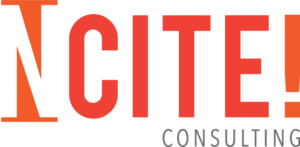We continue exploring public funding this week.
Public Versus Private Funding
It’s important to understand the differences between public and private funding, especially advantages and disadvantages. If you are new to public grant seeking, I encourage you to invest time in learning as much as you can—particularly about the management, bookkeeping and reporting requirements—before beginning your first application. You want to ensure your organization has the capacity to handle public monies and those requirements.
Here’s a quick snapshot of the advantages and disadvantages of public funding: http://literacy.kent.edu/Oasis/grants/publicVSprivate.html.
When your nonprofit is ready to go for a government grant, I suggest you start your research with the Catalog of Federal Domestic Assistance and Grants.Gov. These sources have information on available grants and guidelines. Often, state governments have similar resources. Many times, your local government has grant opportunities, too.
Check The Fit
I always caution grant seekers (especially beginners) that you invest time in making sure the grant opportunity matches with the mission of your nonprofit and the outcomes of the program you will propose. Don’t waste time (and many nonprofits do) going after grants that are not a good, solid match.
The Fundraising Authority offers additional information and has links to research sites. http://www.thefundraisingauthority.com/grants/find-grants-nonprofit/
Fundraising Models
After 30 years in the nonprofit sector (which means 30 years of fundraising work!), I’ve learned that there are as many different funding models as people can imagine.
The Bridgespan Group offers detailed information on 10 different funding models, including public funding (#5). The article uses specific organizations and examples to show the variety of ways to fund a nonprofit organization. https://www.bridgespan.org/insights/library/funding-strategy/ten-nonprofit-funding-models
Tips on Grant Writing
There is a distinctly different way of writing a grant for a government grant than writing a grant for a private foundation. Many years ago, I had submitted four or five Federal grant applications without success and was beginning to doubt my organization would ever have get a grant from the government.
Then, a Board member and fellow grant writer, who was also an attorney, worked with me (I called her my Federal Grant Writer Trainer) on a couple of applications. We had success and, in this process, I learned how to write a more effective Federal grant application.
The main challenge, for me, was writing the Federal grant application in the same manner as the legislation. This included arranging my narrative in the order of the grant requirements as described in the Federal Register. This was different from my experience writing private grants where I, typically, had the leeway to tell the story of the need and how we planned to address that need.
Ask for help among your networks—your Board, other nonprofit colleagues (especially those who have been successful getting government grants), staff, constituents—getting them to read and respond. Look into opportunities to review grants, another great way to learn what works.

